Why are my hydrangea flowers turning brown? Experts share 5 common causes
If your hydrangeas go brown before their season is up, it's an indication something isn't quite right
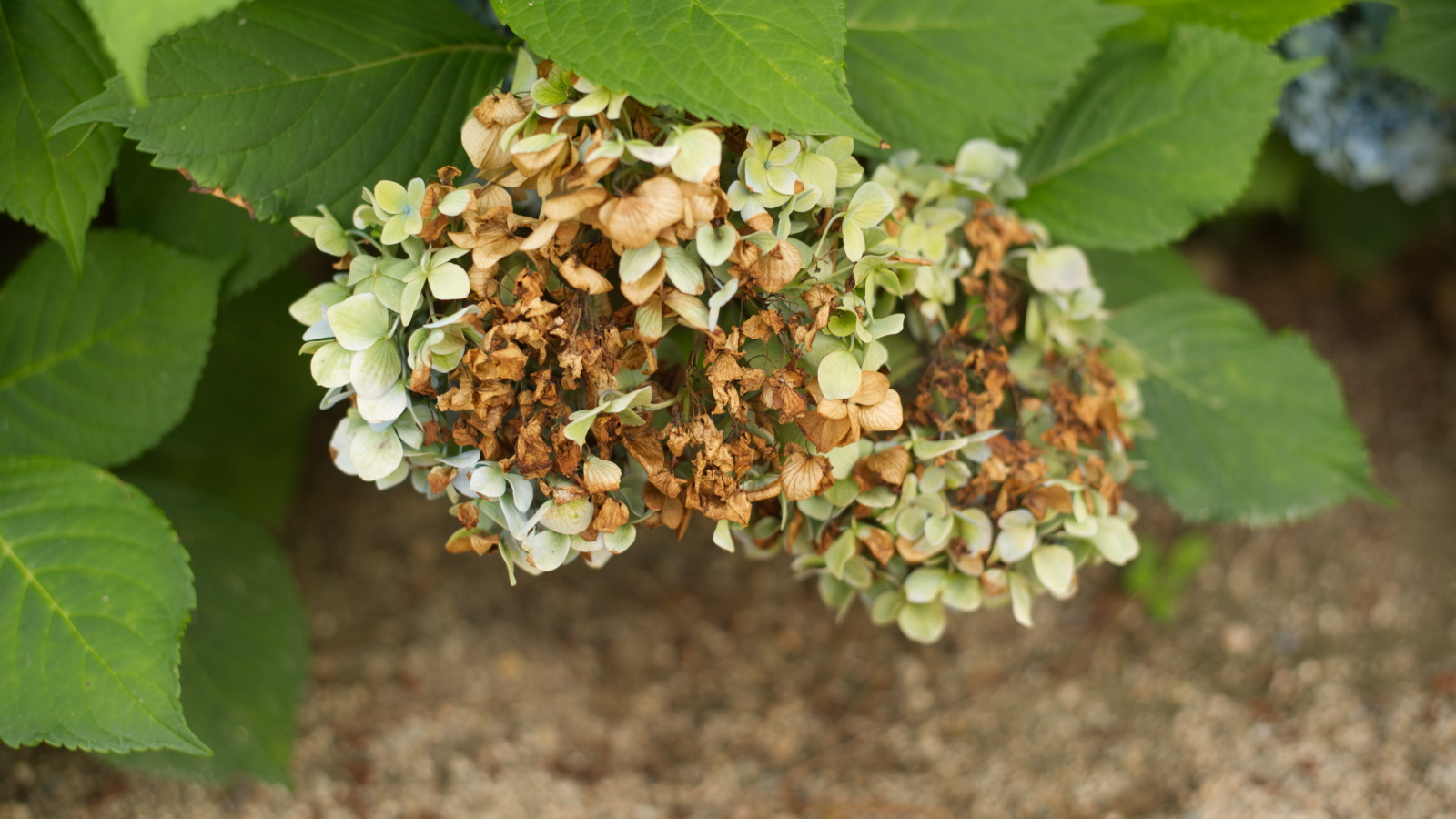

If there's one summer flower that isn't losing popularity any time soon, it's hydrangeas. These showy blooms are loved for their large flower heads in blue, purple, pink or white. Their pretty spherical shape has earned them a spot in pots, and borders and they're even used as cut flowers.
If you grow hydrangeas in your yard, their large blooms are likely a prized possession among the rest of your summer planting. That's why seeing them turn brown and watching your hydrangeas wilt can be concerning. While it's true hydrangeas don't bloom forever, you can typically expect them to last from mid-spring through to the end of summer.
If you notice your hydrangea flowers starting to go brown before the time they should be, it's an indication something isn't quite right and you need to step in to prevent further problems. Here, I've listed five common causes of brown hydrangea flowers with expert tips on how to solve this issue.
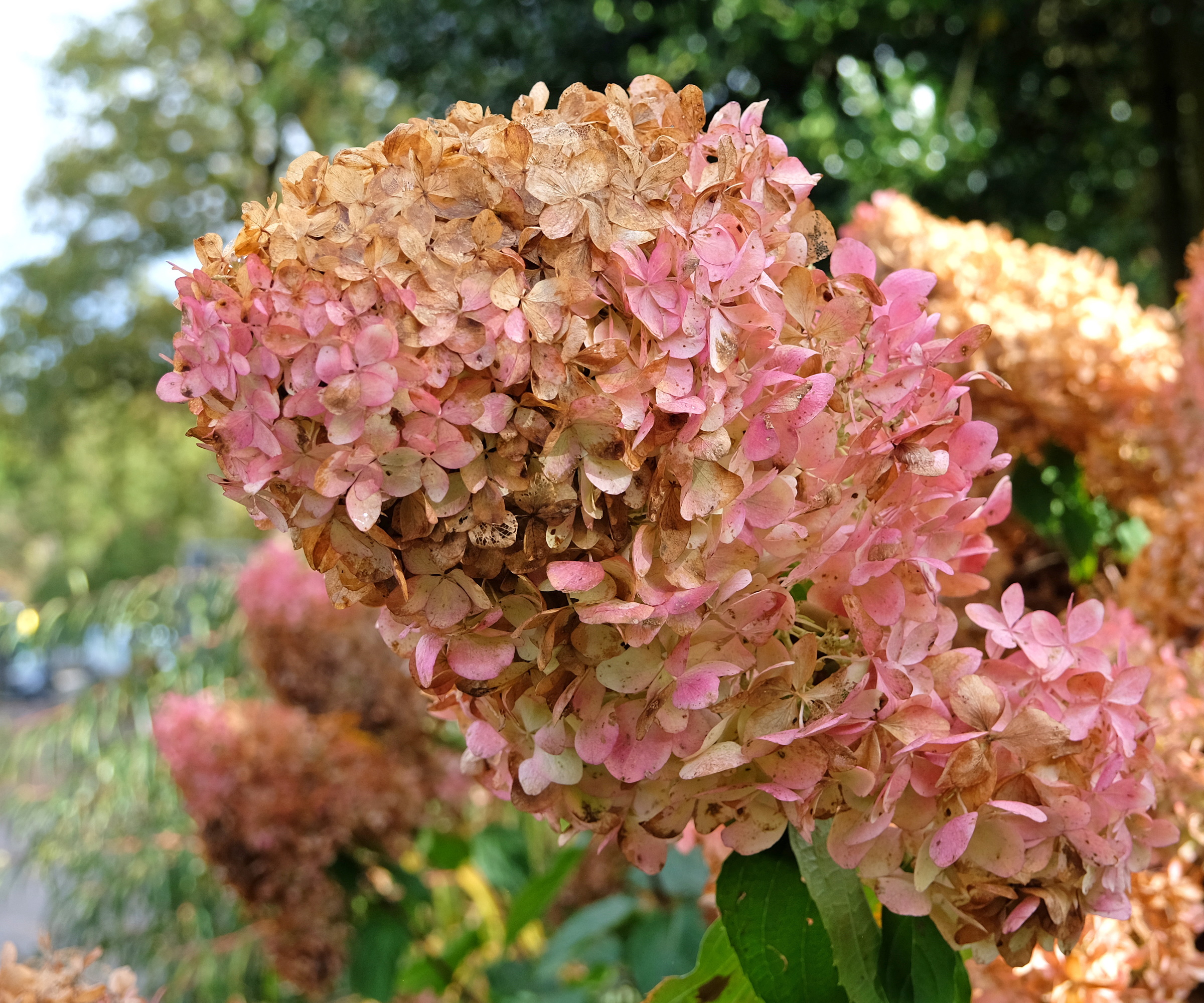
5 reasons why your hydrangea flowers are turning brown
Hydrangeas can be grown across US hardiness zone 3 to zone 9 and will typically flower until fall arrives. Once their flowers are spent, you will need to deadhead your hydrangeas to encourage returning blooms next spring. However, if you find you're deadheading them during the middle of summer, there might be a bigger underlying issue causing your hydrangea flowers to go brown. Discover five common causes and solutions below.
1. They're receiving too little water
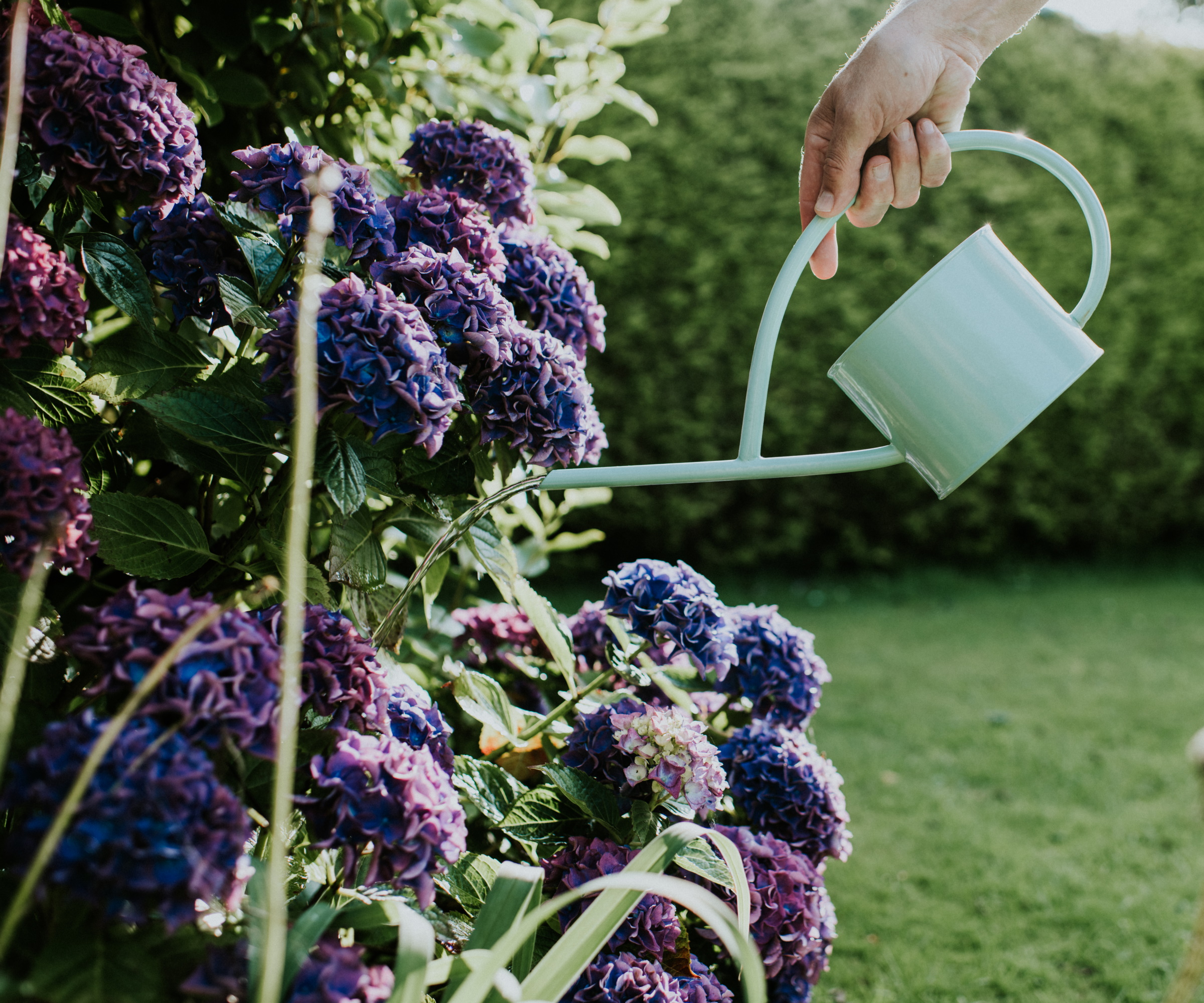
It says it in its name - hydrangeas thrive when well-watered. If you're wondering if hydrangeas are drought-tolerant, the answer depends on the variety. However, for the most part, hydrangeas need watering often during summer and will quickly start to deteriorate in appearance if not.
'The most likely reason for hydrangea flowers turning brown is a lack of water. Hydrangea shrubs are moisture lovers that need a regular source of water to look their best,' notes gardening expert Janet Loughrey.
Another sign your hydrangea is dehydrated is browning tips on the leaves, although brown spots on hydrangea leaves is a different common hydrangea disease.
'Increase watering as needed. Hydrangeas need at least an inch of water per week,' says Janet. 'Though browning on hydrangea flowers can’t be reversed, adequate moisture will prevent new flowers from turning brown,' she adds.
Design expertise in your inbox – from inspiring decorating ideas and beautiful celebrity homes to practical gardening advice and shopping round-ups.

Janet Loughrey has been a full-time garden photographer and writer for 25 years. She lives and gardens in Portland, Oregon. Previously, Janet gardened in the Adirondack region of upstate New York where she grew up. Experiencing different climates has given Janet a greater appreciation of the gardening challenges they present. In her own personal garden, Janet tends to an eclectic mix of roses, shrubs, perennials, and bulbs. Her most recent passion is growing annual flowers in containers from seed.
2. They're exposed to too much sunlight
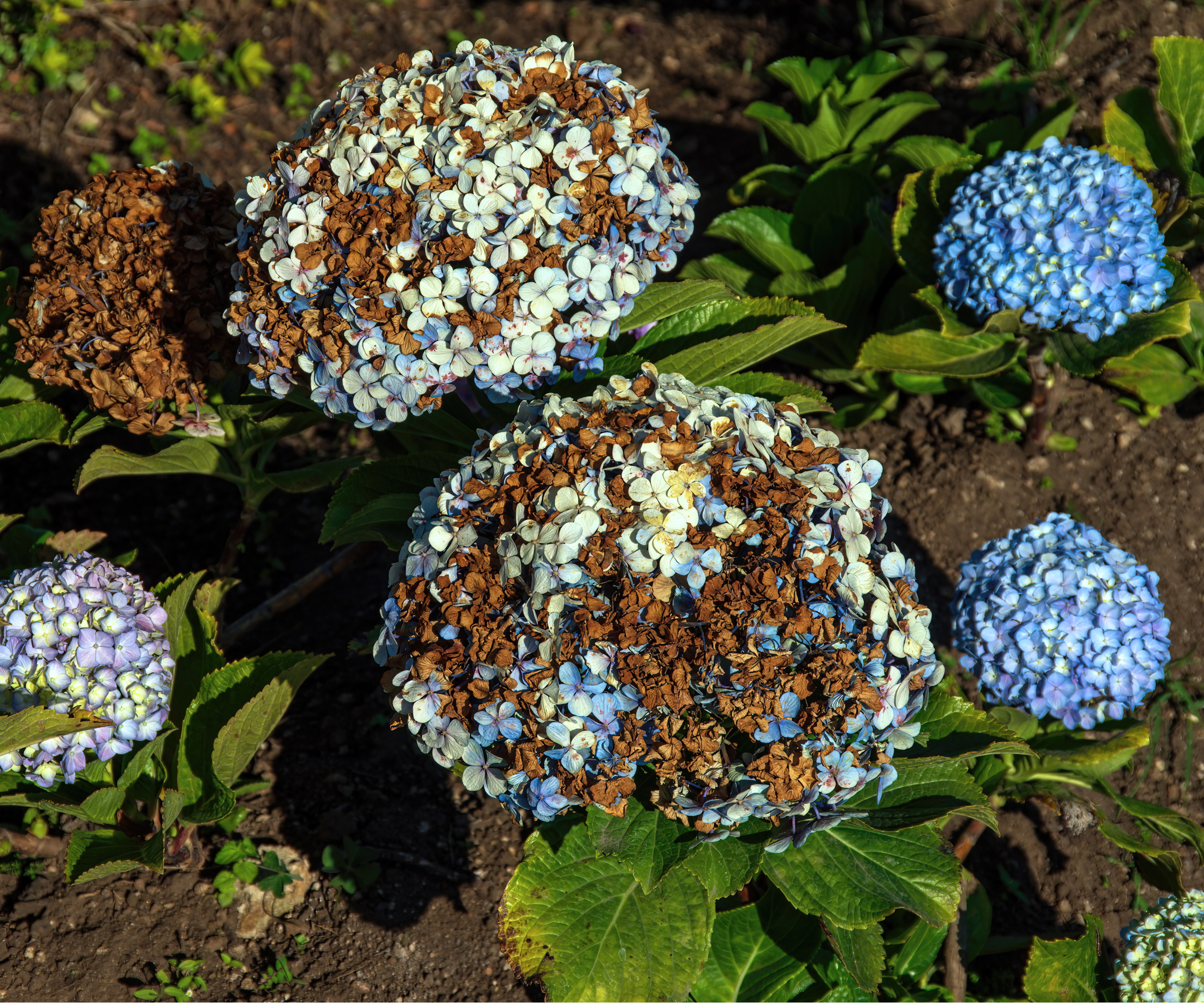
Have you ever considered flowers can be burned by the sun just like our skin? Well, many flowers can't cope with too much direct sun exposure, resulting in the appearance of being sunburned.
'Hydrangeas grow natively in woodland settings where they receive partial or dappled shade. Too much sun can cause hydrangea flowers to turn brown,' explains Janet.
Similar to leaf scorch, delicate petals can also be scorched by the combination of too much sun and a lack of water. If your hydrangeas in pots are currently in a sunny position where they're turning brown, it's a good idea to consider moving them.
'Hydrangea shrubs perform and flower best in a location that receives morning sun and some afternoon shade. Move affected plants to a shadier site if they are not too large,' suggests Janet. 'You can also use a shade cloth or grow a tree nearby to provide some shade.'
If your hydrangeas are not able to be moved, there are lots of ways you can create more garden shade for them. As Janet mentions, you could grow trees to cast shade over your hydrangeas or use this shade cloth from Amazon on particularly sunny days.
3. They're under too much heat
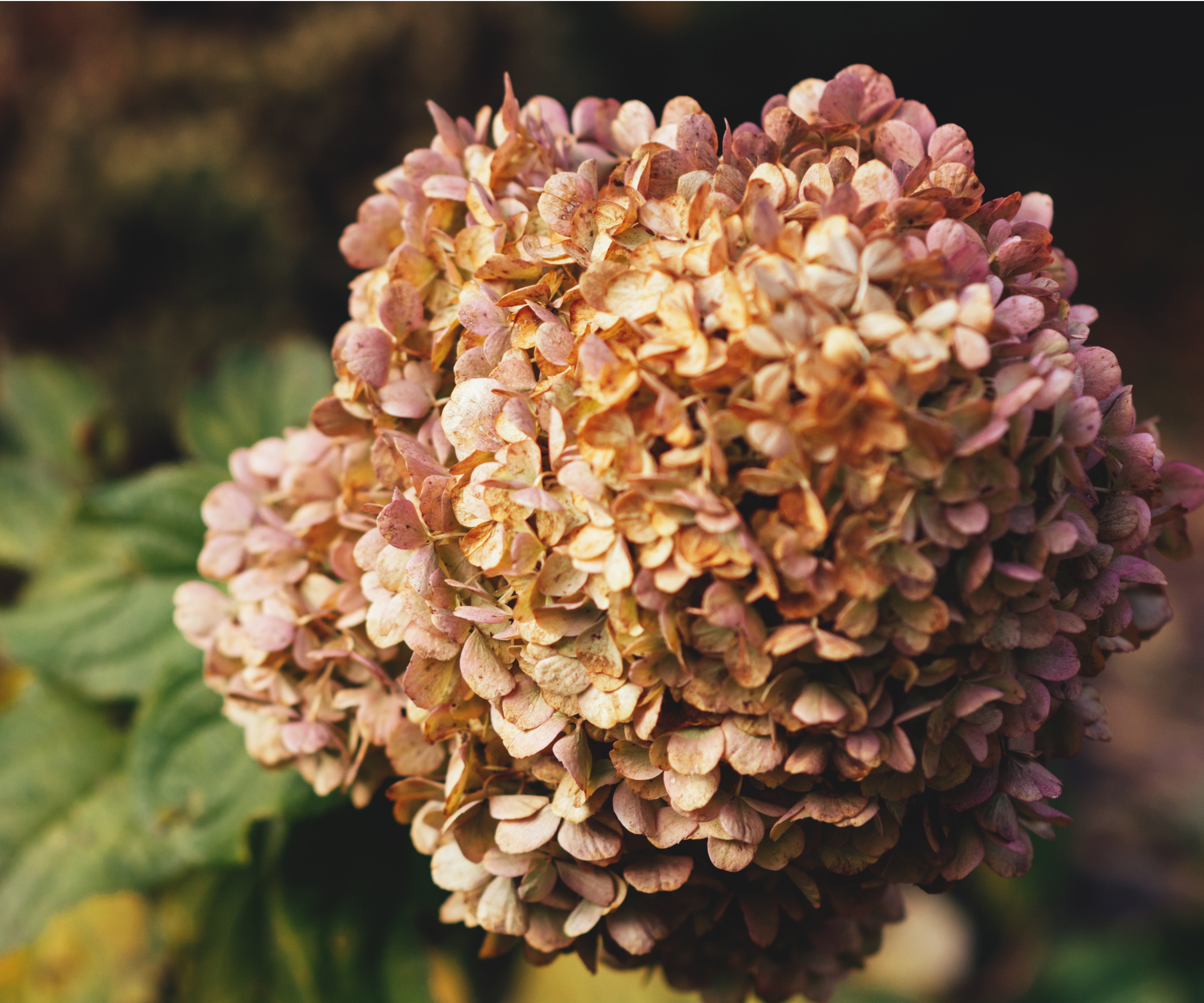
This common cause goes hand-in-hand with your hydrangeas being exposed to too much sunlight. These spectacular blooms are native to Asia and the Americas and grow in cool woodland settings. Too much heat, therefore, can damage their flowers.
'All blooming plants need good light to spur the floral buds, but hydrangeas can easily get stressed if too hot from too much direct sunlight, so be mindful of how much full sun they receive,' says flower expert and vice president of procurement at 1-800-Flowers, Kevin Cochran.
'Even if hydrangeas receive adequate water and shade, the flowers can still turn brown if temperatures are too hot,' says Janet. 'If you live in a warmer climate, choose more heat-tolerant hydrangea varieties such as oakleaf hydrangea, or substitute with other more heat tolerant plants such as butterfly bush, chaste tree or crepe myrtle,' she suggests.
The good news is there are so many wonderful hydrangea varieties that can cope with higher temperatures, like this oakleaf hydrangea from Nature Hills. You can, as Janet suggests, also look into drought-tolerant plants as alternatives if you live in a hotter climate.
Always research the US hardiness zone of a hydrangea variety before you try to grow it in your yard.

Kevin is the vice president of procurement at 1-800-Flowers.com. He is a flower expert and advises on how to grow and care for different blooms, as well as common problems.
4. They're being attacked by pests
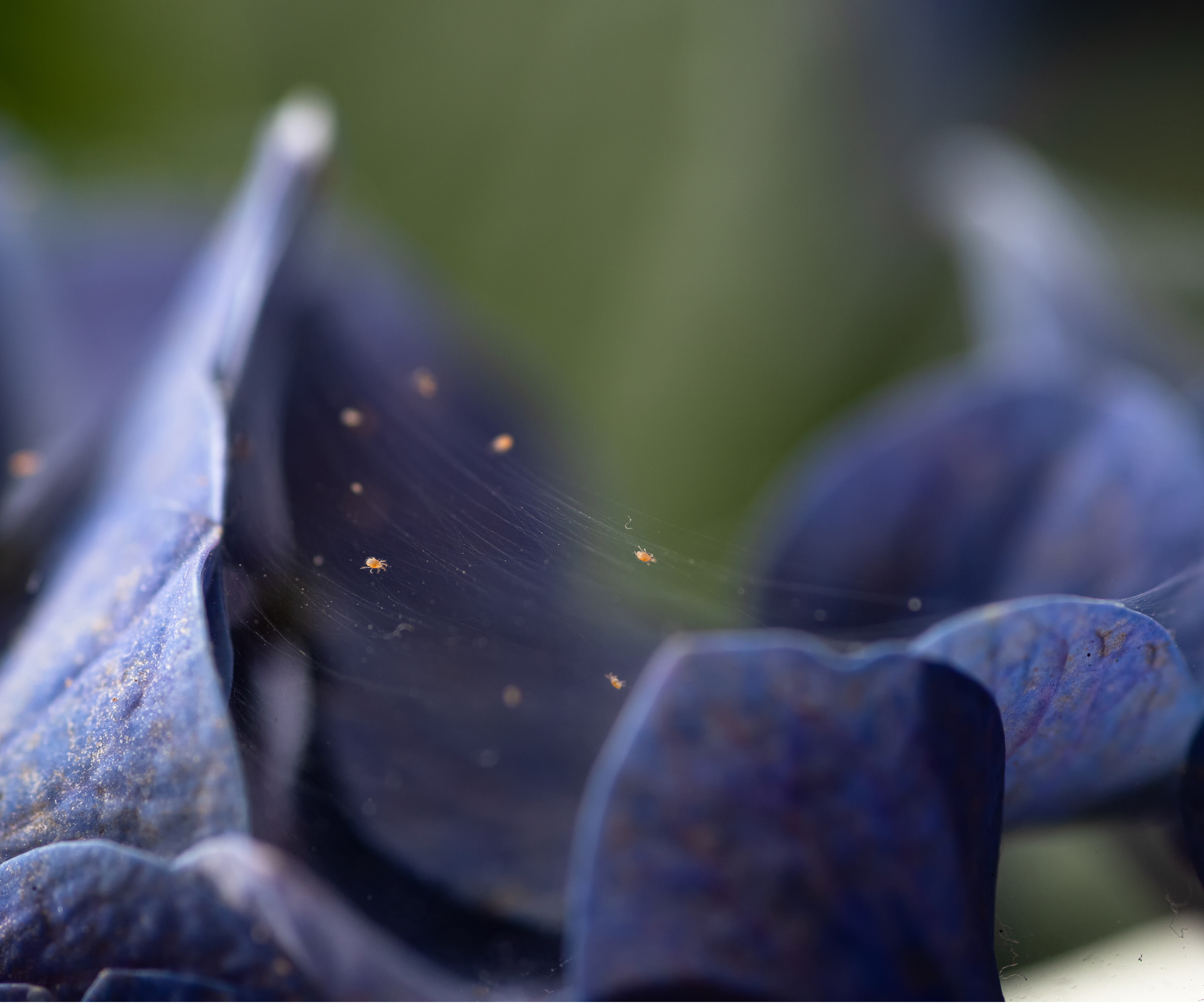
If you maintain a consistent water level for your hydrangeas and keep them out of direct sunlight, but the flowers are still turning brown, pests might just be the problem. Pests are something every gardener has to deal with and not catching them quickly is a common pest control mistake that can cause your plants more harm.
'Aphids and spider mites are insects that commonly attack hydrangeas and cause damage to leaves, floral blooms and plant stems,' says Kevin. 'These insects will cause the plant to wilt.'
Spider mites are tiny red spiders that feed on plant matter. Signs your hydrangea has spider mites include spider webs over leaves and blooms, and a grainy residue. It's best to get rid of spider mites as quickly as possible so they don't spread over your whole hydrangea. There are lots of ways to do this, including using a soap solution.
Likewise, aphids are sap-sucking insects that can leave plants weak and discolored. A sign your hydrangea has aphids is the sticky substance they leave behind. There are plenty of ways to get rid of aphids and you can even make your own DIY aphid spray as a solution.
Whenever dealing with pests of any kind, the first thing you need to do is isolate the infected plant so pests don't spread.
5. Their blooms are spent
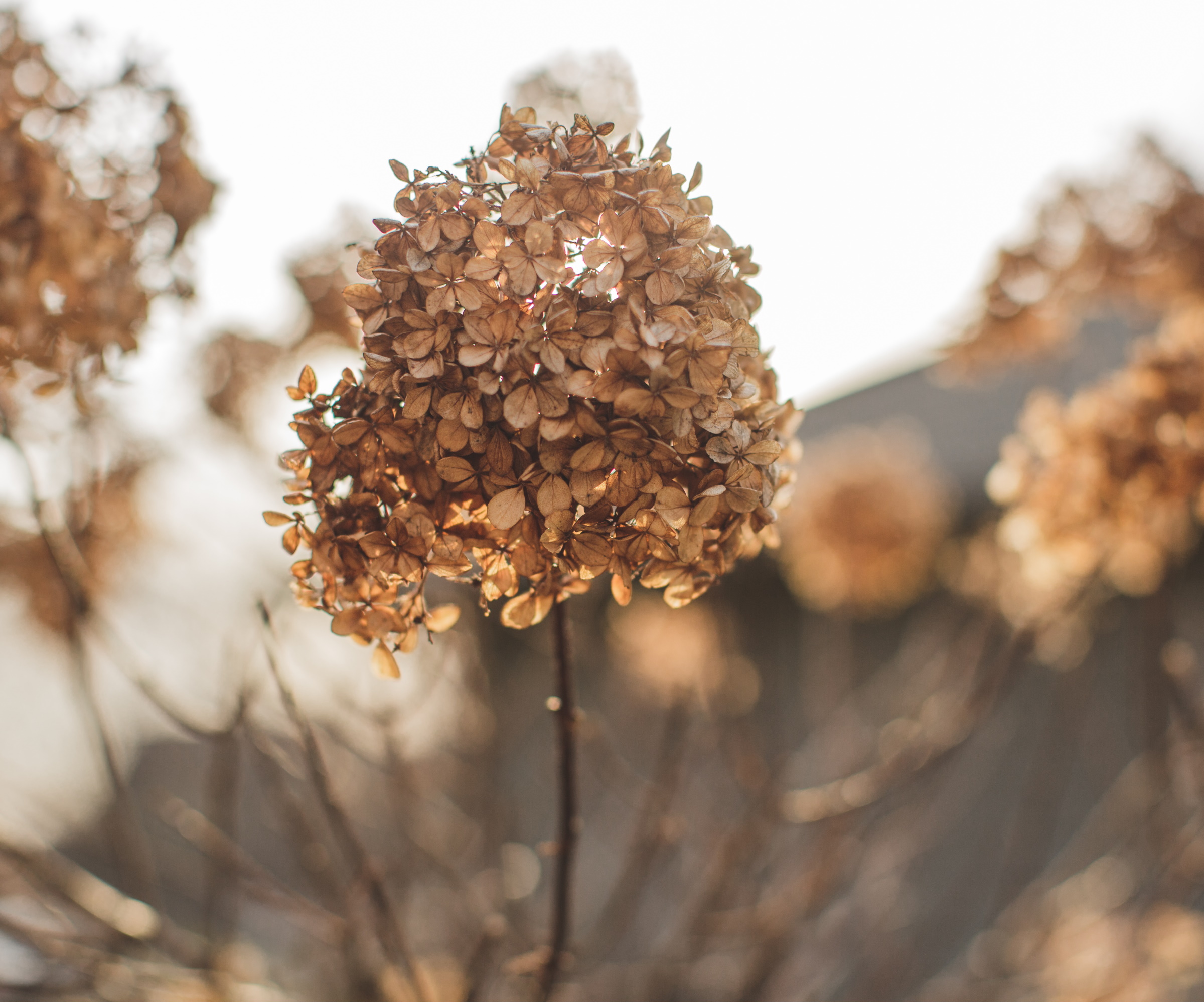
Of course, your hydrangea flowers may have also turned brown because they are spent and have come to the end of their flowering season towards fall. This isn't a reason to be alarmed, but you must take the time to prepare your hydrangea plants for winter so they can bloom again in spring.
'Hydrangea flowers naturally turn brown over time, similar to how other flowers age. This is a normal part of their lifecycle,' says plant expert Evan Torchio from Tree Menders. 'While some varieties can produce new flowers, most hydrangeas will focus on root and bud development as their blooms decline.'
As well as deadheading and removing spent hydrangea blooms, you should also prune hydrangeas at the end of summer. This is an opportunity to remove any dead and damaged flowers and stems so your plant can focus on new growth for the next season.
Take the time to read up on how to prune hydrangeas so you don't make common pruning mistakes and hinder new growth, and always use sharp essential gardening tools like these pruning shears from Amazon.

Evan Torchio is a plant expert and the CEO and Founder of Tree Menders. He earned a bachelor’s degree in forestry and is a member of the International Society of Arboriculture. Evan provides advice on indoor and outdoor plants.
FAQs
How do I revive a brown hydrangea?
If your hydrangea has turned brown before it's meant to, for example, due to incorrect watering or too much sun exposure, it's a good idea to do some pruning to bring it back to health. You should remove any damaged blooms, stems and foliage with pruning shears. Depending on the cause of the brown flowers, you should then adjust the growing conditions of your hydrangea plant to avoid more flowers turning brown. This could mean improving your watering regime or moving your hydrangea to a shadier spot out of direct sunlight.
While you won't be able to turn a brown hydrangea flower colorful again, it's still important to take action when you see flowers turning brown before they're meant to. It's also worth checking surrounding plants for similar symptoms to ensure there isn't a wider problem in your backyard. The causes listed here could also be the reason your hydrangea isn't blooming, so adjusting growing conditions accordingly can help give this cottage garden plant a boost.

Tenielle is a Gardens Content Editor at Homes & Gardens. She holds a qualification in MA Magazine Journalism and has over six years of journalistic experience. Before coming to Homes & Gardens, Tenielle was in the editorial department at the Royal Horticultural Society and worked on The Garden magazine. As our in-house houseplant expert, Tenielle writes on a range of solutions to houseplant problems, as well as other 'how to' guides, inspiring garden projects, and the latest gardening news. When she isn't writing, Tenielle can be found propagating her ever-growing collection of indoor plants, helping others overcome common houseplant pests and diseases, volunteering at a local gardening club, and attending gardening workshops, like a composting masterclass.